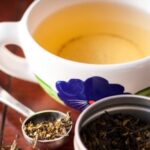For many children with autism, sensory processing challenges play a significant role in their daily experiences. Sensory processing issues occur when the brain has trouble receiving and responding to information that comes through the senses. These issues can lead to difficulties in managing everyday activities, interacting with others, and adapting to different environments. Applied Behavior Analysis (ABA) therapy, known for its ability to improve behavior and learning in children with autism, also provides effective strategies for addressing sensory processing challenges. In this article, we will explore what sensory processing issues are and how ABA therapy can help children manage and overcome these obstacles.
What Are Sensory Processing Issues?
Sensory processing refers to the way the brain interprets and organizes sensory information from the environment and the body. This includes sensations such as sight, sound, touch, taste, smell, and movement. For children with sensory processing issues, these sensations can be overwhelming, underwhelming, or confusing, leading to a variety of challenges in how they interact with the world around them.
Types of Sensory Processing Issues
- Hypersensitivity (Over-Responsive) Children who are hypersensitive may find certain sensory inputs overwhelming or painful. For example, a child might cover their ears when exposed to loud noises or avoid certain textures because they feel too intense. Bright lights, crowded spaces, and even certain fabrics can trigger sensory overload, causing discomfort, anxiety, or meltdowns.
- Hyposensitivity (Under-Responsive) On the other hand, children who are hyposensitive may not respond strongly enough to sensory inputs. They might seek out additional sensory stimulation, such as touching objects frequently, moving constantly, or not noticing when their name is called. These children may have trouble sitting still in class, concentrating, or engaging in tasks that don’t offer enough sensory input.
- Sensory Seeking Some children exhibit sensory-seeking behavior, where they crave certain sensations. This might include jumping, spinning, or touching everything in their environment. Sensory seeking can lead to disruptive behaviors if not managed effectively, especially in structured settings like schools.
- Sensory Avoidance Sensory avoidance is common in children with hypersensitivity. These children may try to escape or avoid environments that overstimulate them. For instance, they might refuse to enter noisy or crowded places or become upset when introduced to new foods with unfamiliar textures.
How Sensory Processing Issues Affect Daily Life
Children with sensory processing issues may struggle in various areas of daily life, from completing everyday tasks to socializing with peers. These challenges can affect their ability to focus, communicate, and regulate emotions, leading to difficulties in school, at home, and in social situations.
- Difficulty in School: Sensory sensitivities can make it hard for children to focus in a classroom. A child who is hypersensitive to noise might be distracted by the sound of pencils writing, while a child who is hyposensitive might fidget constantly due to a need for more sensory input.
- Social Challenges: Sensory issues can impact a child’s ability to interact with others. A child who avoids touch might struggle with activities like holding hands or playing games that involve physical contact, while a child who craves touch might invade other people’s personal space.
- Emotional Regulation: Sensory processing issues can lead to emotional outbursts when a child feels overwhelmed or unable to express their discomfort. Sensory overload may result in meltdowns, while under-stimulation can lead to frustration or hyperactivity.
How ABA Therapy Helps Address Sensory Processing Issues
ABA therapy is a highly structured, evidence-based approach that uses reinforcement strategies to teach new skills and behaviors. While ABA is typically associated with addressing communication, social, and behavioral challenges, it can also be highly effective in helping children manage sensory processing issues.
1. Identifying Sensory Triggers and Preferences
One of the first steps in ABA therapy is conducting a detailed assessment to identify the specific sensory triggers and preferences of the child. ABA therapists observe how the child responds to various stimuli and gather information from parents and caregivers about their child’s sensory experiences. By understanding what sensory inputs the child is avoiding or seeking, therapists can develop a customized intervention plan that addresses these needs.
- Personalized Sensory Plan: ABA therapists work with the child and their family to create a sensory plan tailored to the child’s unique sensory profile. This might involve introducing sensory-friendly environments or incorporating sensory breaks throughout the day to help the child manage their needs in a healthy way.
2. Using Desensitization Techniques
For children who are hypersensitive to certain stimuli, ABA therapy uses gradual exposure techniques to help them become more comfortable with sensory inputs that typically cause discomfort. This process, known as desensitization, involves exposing the child to sensory stimuli in small, manageable doses and reinforcing positive reactions.
- Gradual Exposure: If a child is hypersensitive to loud noises, for instance, the therapist might start by playing soft sounds at a low volume and slowly increasing the intensity as the child becomes more accustomed to it. Over time, the child can learn to tolerate higher levels of noise without feeling overwhelmed.
- Positive Reinforcement: Throughout the desensitization process, ABA therapists at Kids Club ABA use positive reinforcement to encourage the child’s progress. For example, if the child remains calm when exposed to a new sensory input, they might receive verbal praise, a favorite toy, or extra playtime as a reward.
3. Incorporating Sensory Activities
For children who are hyposensitive or sensory seekers, ABA therapy incorporates activities that provide the needed sensory stimulation in a controlled and productive way. This helps the child engage in more appropriate behaviors that fulfill their sensory needs without being disruptive or unsafe.
- Sensory Diets: A sensory diet is a set of activities designed to provide the child with regular sensory input throughout the day. ABA therapists help create a sensory diet that includes exercises like jumping on a trampoline, squeezing stress balls, or playing with textured materials. These activities give children the sensory input they crave while helping them stay focused and regulated.
- Reinforcing Positive Behavior: ABA therapists teach children to seek out sensory input in appropriate ways. For example, a child who has a habit of throwing objects to get sensory feedback might be taught to use a weighted ball for sensory play instead.
4. Teaching Self-Regulation Skills
Self-regulation is a key goal in ABA therapy, particularly for children with sensory processing issues. ABA therapists help children recognize their sensory needs and teach them strategies to self-regulate before they become overwhelmed.
- Recognizing Overstimulation: ABA therapists work with children to identify the signs of sensory overload. For example, if a child tends to get anxious in noisy environments, the therapist might help them recognize the feeling of discomfort and teach them how to ask for a break before it escalates into a meltdown.
- Using Calming Techniques: ABA therapy also teaches children calming strategies that they can use when feeling overstimulated. This might include deep breathing exercises, using noise-canceling headphones, or retreating to a quiet space for a sensory break.
5. Improving Social Skills Through Sensory Integration
ABA therapy can also help children with sensory processing issues improve their social interactions by teaching them how to engage in social situations without becoming overwhelmed. Sensory integration activities are often combined with social skill-building exercises to help children feel more comfortable in group settings.
- Sensory-Friendly Social Activities: ABA therapists create social scenarios that take into account the child’s sensory needs. For instance, children may practice playing with peers in environments that are quieter or less visually stimulating to help them engage without sensory overload.
- Peer Modeling: In group therapy settings, children observe peers managing similar sensory challenges. This peer modeling helps children see how others successfully navigate sensory stimuli, encouraging them to mimic those behaviors.
Conclusion
Sensory processing issues can present significant challenges for children, but with the help of ABA therapy, these challenges can be managed effectively. By addressing both hypersensitivity and hyposensitivity through personalized interventions, ABA therapy helps children become more comfortable in their environments, improves their social interactions, and equips them with self-regulation tools. With a tailored sensory plan and the guidance of experienced ABA therapists, children can learn to navigate the world with greater confidence and ease.










